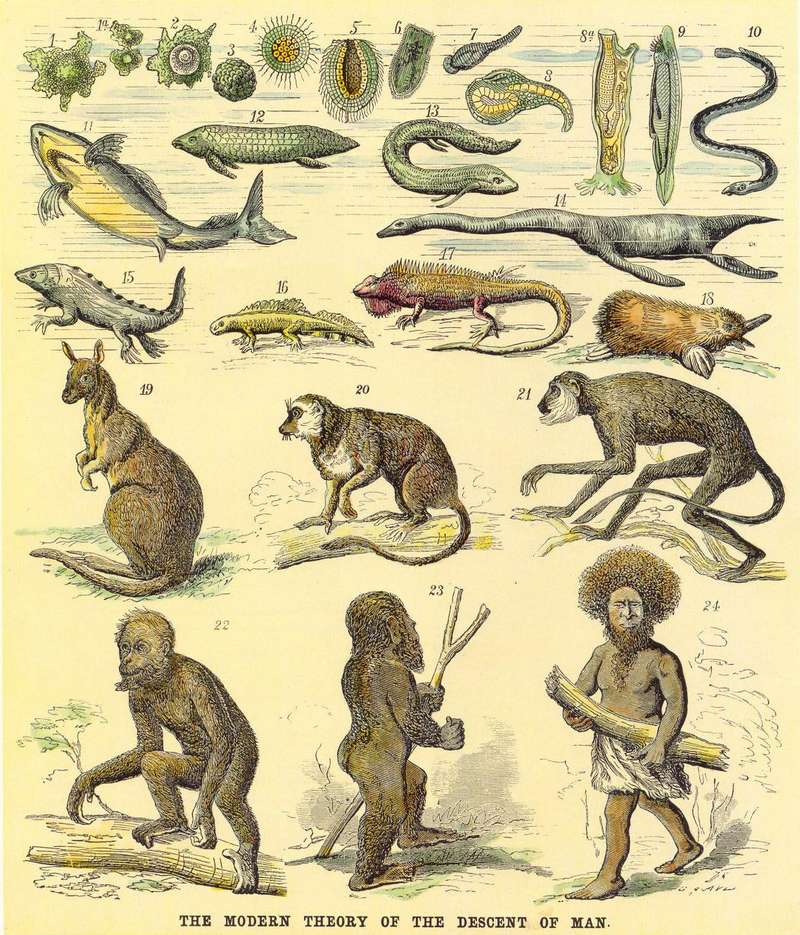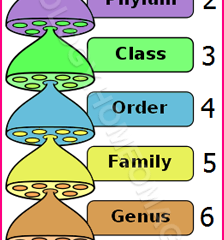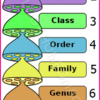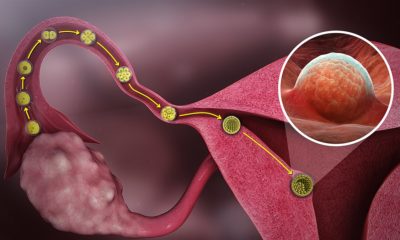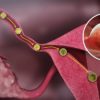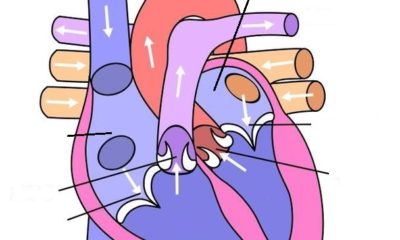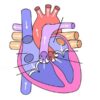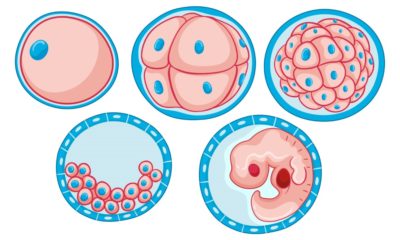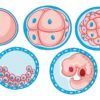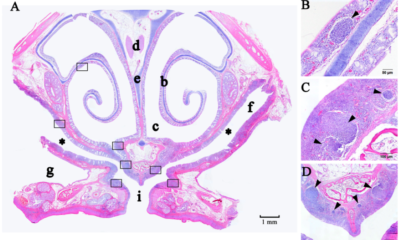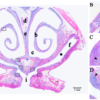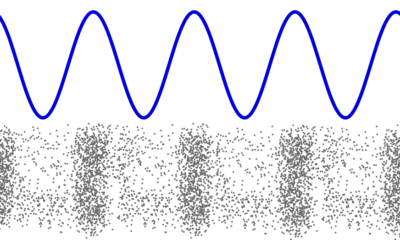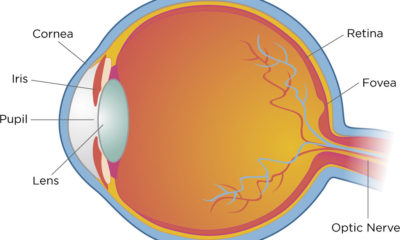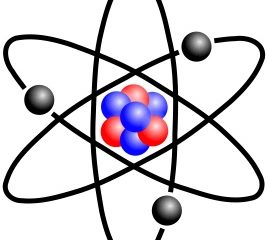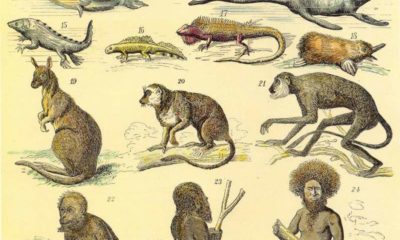Biology
HEREDITY AND EVOLUTION
Heredity :- Transmission of characters from parents to offsprings i.e. from one generation to the next is called heredity.
Offsprings are generally similar to their parents due to heredity.
Variations:- The differences shown by the individuals of a species, and also by the offsprings of the same parents are reffered to as variations.
The two offsprings of a parent never match in all the characters(Except in the case of identical twins). This differentiation is due to variations.
Genetics :- Genetics is the study of heredity and variation. The term ‘genetics’ was coined by William Bateson in 1906.
Traits:- Characterstics or the features which represent variations among the indivisuals of a species are called traits. Like colour of body, hair and eyes, types of hair, shape of nose, chin etc are the traits in human beings.
Types of Traits:- Traits are of two types-
- Inherited Traits :- The traits which have the genes present at the chromosomes and are transmitted from parents to offsprings are called inherited traits. Ex Height, Colour of eye, type of hair etc
- Acquired Traits :– These traits don’t have the genes present at the chromosomes. Thus are not transmitted from parents to offsprings. These traits are acquired from the surroundings of the individual by the process of adaptation. Sports activity, study habit, health etc are acquired traits
Contrasting Characters or Traits :- The characters which always appear in two opposing conditions are called contrasting characters. For example violet and white colour of flowers in garden pea(Pisum sativum) are contrasting characters.
Accumulation of variations and Diverstiy :- During the reproduction there is possibility of change in the gene structure of the progeny due to errors in DNA replication. These changes can further transmit to the next generation with the addition of other changes or variations. As a result the new species is developed which is significantly different from parental generations(Ancestors) . In asexual reproduction there are very minor differences arise due to small inaccuracies in DNA copying. So there would be very minor differences or variations between them. It is due to the reason that asexual reproduction involves single parent.
In the case of sexual reproduction the chances of variations are much more than in asexual reproduction as it involves two parents in which every offspring receive characters from both parents(Father and mother). As a result different offsprings have different combination of characters which leads to variation. These variations accumulate to form new species. This becomes the basis of diversity.
Mendel and his contribution :- Gregor Johann Mendel was an Austrian scientist belong to a peasant family. He did his experiment on garden pea(Pisum sativum). On the basis of his experiments he gave rules for the inheritance of traits. Mendel’s findings formed the basis of the science of genetics and now he is credited as ,father of genetics’
Why did Mendel select garden pea plant (Pisum sativum) for his hybridization experiments?
Due to the following features Medel selected garden pea for his series of hybridization experiment :-
- It had short life cycle and therefore, it was possible to study number of generations in a short period.
- Garden pea plant had distinct, easily detectable contrasting variants (Contrasting characters) of features. For instance, some plants were tall and some were dwarf; some had violet flowers and some had white flowers, some plants had round seeds and some had wrinkled seeds and so on. Mendel, in fact noted seven pairs of such contrasting characters in garden pea plant.
- All contrasting traits were existing in every generation because plants had bisexual flowers and normally resorted to self-pollination.
- In these bisexual plants, artificial cross fertilization could easily be achieved. It was done by removing the stamens(male part) before maturing of the female part of flowers and later duting the pistil (female part) of this flower with the matured pollens from a desired plant.
- Each pea plant produced many seeds in one generation.
- The garden pea plant could easily be raised, maintained and handled.
Steps in Mendel’s Experiment:- Mendel conducted his breeding experiment in three steps-
- Selection of pure parent plants i.e. plants producing similar traits in every generation.
- Production of first generation of plants by cross breeding (hybridization)
- Raising of second and subsequent generations by self fertilization of hybrids.
Emasculation:- Removing the anthers (male parts) of the flowers well before the maturing of the female part i.e., gynoecium of the flower.
Mendel’s Experiment
- Mendel’s Monohybrid cross :- A breeding experiment dealing with a single character is called a monohybrid cross. For example Medel took a plant from parent having violet flower and other having white flower. He made a cross between them and found first generation which had violet flowers.
 In f1 generation all plants were having only violet flowers. This represents the dominancy of violet colour trait over white.Dominance :- The phenomenon of appearance of only one of two contrasting traits in f1 generation is called dominance.Law of Dominance:- “If pure varieties of a contrasting character are being crossed then in f1 generation only that character represents itself which is dominant to other.” For example if tall and dwarf plants are being crossed together, only tall plants will appear in first generation.
In f1 generation all plants were having only violet flowers. This represents the dominancy of violet colour trait over white.Dominance :- The phenomenon of appearance of only one of two contrasting traits in f1 generation is called dominance.Law of Dominance:- “If pure varieties of a contrasting character are being crossed then in f1 generation only that character represents itself which is dominant to other.” For example if tall and dwarf plants are being crossed together, only tall plants will appear in first generation.
Law of segregation:- When plants obtained in f1 generation are left for self pollination, both forms of contrasting character are obtained in f2 generation (second generation). It clarifies that gametes don’t mix during fertilization. The recessive character represent its trait in absence of dominant gene(Both genes are recessive in allele). This law is also known as ‘Purity of gametes’. Tall plants obtained in f1 generation give both tall and dwarf plants in f2 generation.
- Medel’s Dihybrid cross :- Mendel also studied the inheritance of two characters simultaneously. A breeding experiment dealing with two characters at the same time is called a dihybrid cross. Mendel took two contrasting characters i.e., colour and shape of seeds simultaneously. He selected pure parent plants one having round and yellow seed and other having wrinkled and green seed. He made a cross between them and found all plants having round and yellow seed in f1 generation. In f2 generation he found seeds of every trait from the parents in different combinations.
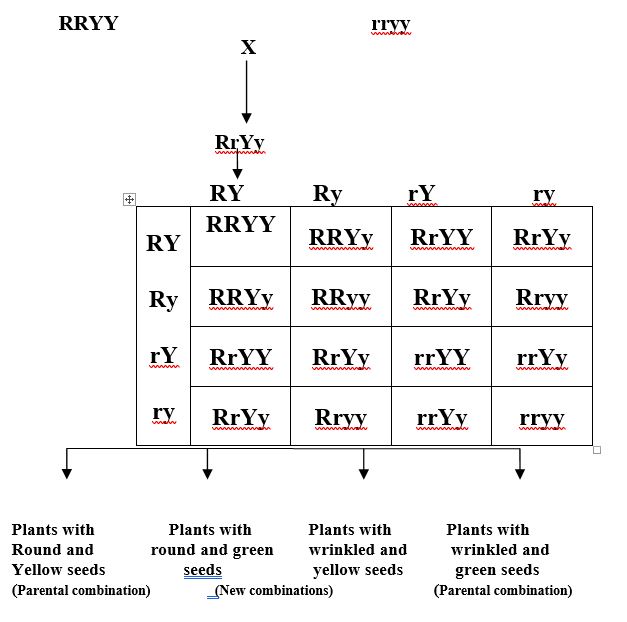
Law of Independent Assortment:- In the f2 generation of dihybrid cross the inheritance of factors controlling a particular trait in an organism are independent of other.
Terminology related to Genetics
Genotype :- Description of genes of comparable character or trait in an organism is called its genotype. For example TT is the genotype for pure tall plant and Tt is for hybrid tall plant. tt is the genotype for dwarf plant.
Phenotype :- Description of physical appearance or visible character in an organism is called its phenotype. For example phenotype of the plant having genotype Tt is tall.
Genotypic ratio:- The ratio of the organisms of various genotypes found in a particular generation of a species is called genotypic ratio of that generation. For example in monohybrid cross the genotypic ratio in f2 generation is 1:2:1.
Phenotypic ratio :- The ratio of the phenotypes of the organisms obtained in a particular generation is called phenotypic ratio. For example phenotypic ratio of violet and white coloured flower plants in second generation of monohybrid cross is 3:1. In f2 generation of dihybrid cross, it is 9:3:3:1.
Types of genotypes
- Homozygous :- If both genes in a genotype are identical the genotype is called homozygous. Ex TT, tt, RR, rr etc
- Heterozygous :– If both genes in a genotype are different the genotype is called heterozygous. Ex. Tt, Rr
Dominant Character :– The character which can represent itself either there exist both genes of this character or only a single gene is present in its genotype. For example tallness is dominant character as it is found in two forms of genotype i.e. TT and Tt.
Recessive Character :– The character or trait which can represent itself only if it has both the genes of this character in the genotype. For example dwarf and white coloured flower plants can exist only in tt and rr forms respectively. Thus dwarfness and white colour of flower is recessive character of the garden pea plant.
Back Cross :- A cross breeding experiment between the plants of f1 generation and any of the parent is called back cross.
Test Cross :– The cross breeding experiment between f1 generation and the parent having recessive character is called test cross. Cross between rr and Rr is the example of test cross. This cross is made to test that whether the f1 generation is homozygous or heterozygous i.e., it is a pure breed or not.
Reciprocal Cross :– The cross breeding experiment in which the source of gametes(male and female) is interchanged. Then it is called reciprocal cross. This means that if in first time the male was taken as dominant and female as recessive then in the second time female was taken as dominant and vice versa. This is done to know that if there is some difference which depend on the sex of the parents
Sex Determination:- The mechanism by which the sex of an individual is determined as it begins life, is called sex determination.
Sex determination in human being :-
The sex of child is determined at the time of fertilization when male and female gametes fuse to form zygote.
There are 46 chromosomes in every diploid cell in human being. These chromosomes present in the pair. That means there are 23 pairs of chromosomes. The 22 pairs of chromosomes have the genes which controls the somatic(Body) characters. These chromosomes(22 pairs or 46 chromosomes) are called Autosomes. The chromosomes of 23rd pair which are called sex chromosomes, control the mechanism of sex determination that means these take part in sex determination. Both sex chromosomes in female are identical (Homomorphic) and are represented as XX, but the sex chromosomes in males are different to each other. One chromosome is similar to that of females and other is little smaller than and represented as Y and the pair of sex chromosomes is represented as XY.
Thus the set of chromosomes in females is 44 + XX and it is 44 + XY in males. When gametogenesis takes place in the sex organs, the gametes (Ova) in the females are identical (22 + X) but in males two types of gametes (sperm) are produced i.e., 22+X and 22+Y. During fertilization when sperm of male having X chromosome fuses with any of the ova of the female, the zygote (44 + XX) develops in to a female child(Girl). When sperm having Y chromosomes fuses with any ova of the female, the zygote (44 + XY) develops into a male child( Boy). So the probability of being a child girl or boy is 50%. But the chance of being the child is more for the boy. It is due to this reason that the sperm having Y chromosome can fuse more easily to the ova due to its small size. The ratio of boys and girls occurs genrally in the nature is – 100 Girls : 103-106 boys.
The mechanism of sex determination in human beings and also in fruitfly(Drosophila) is called XX-XY mechanism.
Role of Environmental Factors in Sex Determination
Sex determination is sometimes regulated by environmental factors also. In some reptiles, the temperature at which the fertilized egg is incubated before hatching is important environmental factor for determining the sex of the offspring.
Examples :-
- In turtle(Chrysema picta) high incubation temperature results in development of female progeny
- In Lizard(Agama agama) high incubation temperature results in male progeny.
- In other animals, eg. Snails, individuals can change sex, indicating that sex is not genetically determined in this case.
Evoultion :- Evolution is the gradual process of change in which complex organisms are originated from the simpler ones. Descent with change or modification is the basic idea of organic evolution.
Order of Diversity
- Everything in the nature, whether it is living or non-living is made up of matter.
- Matter is made up of atoms and molecules.
- All the living beings are made up of protoplasm.
- In all the organisms, protoplasm is found in the form of one or more cellular microscopic bodies.
- In multicellular organisms cells form tissur, tissue form organs and organs form organ system.
- Different types of organisms have their different species.
Importance of Hypothesis of Organic Evolution
Modern scientists consider the hypothesis of organic evolution as a truth. This opens the many mysteries of nature.
- Environmental conditions are changeable in nature.
- Animals have the capability of adaptation to their environment. This forms the basis of formation of new species
- Formation of new species is due to development of various species related to a common ancestor with respect to their geographical distribution.
- The basic process of evolution is the specialization of the body organization according to the need of natural conditions.
- Any two present species have a common ancestor in the past. So all present species are cousins of each other. That means all species have monophyletic genealogy from very beginning. Due to this fact theory of organic evolution is considered the most important unifying concept in biology.
Theories of Organic Evolution
- Mutation Theory of Hugo de Vries :- The formation of new species is due to the sudden change in the gene structure which leads to the change in the character or trait. These characters or traits also transmit in the next generations. This change in the characters is called mutation and the gene which undergo the chemical change is called mutant gene.
- Lamarck’s Theory of Inheritance of Acquired Characters :– This theory is based on four basic assumptions-
- In organic evolution there is a natural tendency of growth and development in the body of organisms.
- There is a direct effect of environment on the life process, habit and characters of organisms.
- On account of environmental changes, the use of various organs of organisms increased or decreased(Use and Disuse). Organs which have more use are developed and there is retardation of organs which have less use. Due to this assumption Lamarckism is also known as Theory of Use and Disuse of organs.
- Due to the direct effect of environment, the changes which occur in the body of organisms during his life are called Acquired characters. These characters are hereditary that means these transmit in to the next generations. From generations to generations these characters are accumulated in the offsprings. Ultimately offsprings become very different from their ancestors.
- Darwin’ Theory of Natural Selection :- Darwinism can be explained in the following heads-
- Enormous fertility of Organisms :- Every organism of a species has enormous fertility for making its species alive or safe. In oysters one female lays one million eggs in on session, a single fungus forms 7000 billions of spores, a female Ascaris lays more than 25 millions of eggs. If all the eggs or spores will develop completely then any species, by increasing in geometric ratio can cover the whole earth in a few generations. The fertility rate is the lowest in elephants. A female elephant in its life span of 30 to 90yrs gives birth to 6 offsprings at an average. If all the offsprings would alive then generations to gernerations their number will be 36, 216, 1296, etc. within 750yrs there would be approximately 20 millions of elephants from a single pair. Human has also increased his population up to double in 40-50 yrs.
- Constant Population of Every Species :- Organisms of any species never found to be increased in geometric ratio in the nature because many organisms before being mature or capable for reproduction are destroyed in some stage due some reasons.
- Struggle for Existence :– Every organism has to struggle with other organisms or with environment for fulfilling his needs to save his entity in the nature. It is called struggle for existence. This struggle is found in all living beings. It is of following three types-
- Intraspecific :- This is the struggle among the members of a species for food, shelter and mating with the partner.
- Interspecific :– This is the struggle among the members of various species for food and shelter mainly.
- Environmental:– All the organisms have to struggle with environmental conditions like hot, cold, rain, flood, drought, wind etc for saving their lives or species.
- Survival of the Fittest or Natural Selection :- In struggle for existence the variation for the members of a species are very important. According to Darwin the organisms that have more useful variations according to environmental conditions get success and become winner in their life’s struggle. On the other hand organism which have unuseful variations are deprived of the necessities of a successful life and are destroyed either by the other organisms(winners) or by themselves( Environmental Conditions). Nature selects the fittest organism for survive. That is why the theory is Natural Selection.
The key factors in the modern concept of evolution are :-
- Genetic Variations
- Natural Selection
- Reproductive Isolation
Natural Selection :- Natural Selection is the phenomenon wherein nature, in the wild, selects traits favourable to the species in its environment.
Genetic Drift :- The elimination of the genes of certain traits from the small population when a section of the species population dies of natural calamity or migrates to other region is called genetic drift. It alters the gene frequency of the remaining population.
Speciation :- Origin of new species from the existing one is called speciation.
Microevolution :- Evolutionary development of a specific species is called microevolution.
Macroevolution :- The evolution of a specific classified group of organisms from a common ancestor is called macroevolution.
Reprodutive Isolation :- Reproductive isolation refers to the mechanisms which check the population of two different groups from interbreeding.
Reproductive isolation may happen in number of ways-
- Temporal Isolation :- It is the failure of two groups of individuals to interbreed because they breed at different times(seasons) of the year.
- Behavioural Isolation :– It prevents inter breeding of two groups due to differences in courtship and mating behaviour.
- Physiological Isolation :– It is the functional incompatibility in mating, or in production and survival of gametes.
- Mechanical Isolation :– It is the difference in size or structure of genitalia (i.e. mismatched genitalia) between two groups that make interbreeding difficult or impossible.
Evidences of Organic Evolution
- Morphological and Anatomical Evidences :- These evidences are based on the similarities in the external and internal features of different kinds of organisms. These features are-
- Homologous Organs :– The organs which perform different functions in different species but have similar basic structure and similar embryonic origin are called homologous organs.
Example- Forelimbs of a frog, a lizard, a bird, and human beings are homologous organs. Tendril of Passiflora and thorn of Bougainvillea are homologous organs.
- Analogous Organs :– The organs which are quite different in fundamental structure and embryonic origin but perform same function and may superficially look alike in entirely different species are called analogous organs.
Example- Wings of a bird and an insect are analogous organs.
- Vestigial Organs :- Organs which are present in a species in reduced form and have no use or function to the organisms in that species but these organs were functional in their ancestors are called vestigial organs
Example- Vermiform appendix, nictitating membrane, Pinna(Ear muscles), Hair on the body are vestigial organs.
There are more than 100 vestigial organs in human body.
- Embryological Evidences :- Embryology is the study of development of an embryo of organism from fertilized egg to young one. Study of the embryologies of different animal groups shows remarkable similarities between them. Early embryos (Marula and blastula stages) of all the vertebrates resemble in shape and structure. The resemblance of early embryos of fish, salamander, tortoise, chick, rabbit and man is so close that it is very difficult to distinguish them from each other. This similarity among the early embryos shows that all the vertebrates have evolved from a common ancestor.
Biogenetic Law :- This law states that an animal in its individual embryonic development from egg to adult repeats or recapitulates in condensed form the stages through which its ancestors have passed in the course of their evolution
- Palaentological Evidences :- The fossils are the impressions or remnants of the ancient life found preserved in the rocks. The most convincing evidence derived from paleontology relates to the ascent of single group such as horses, camels and elephant.
Evolution of Modern Horse-
Eohippus Mesohippus Merychippus Pliohippus Equus
- Archaeopteryx is the connecting link between reptile and bird. Its has both reptilian and bird features (Long tail, teeth in beak )
Artificial Selection :- Artificial selection is the process by which man selects trait(s) useful to him for improving the qualities of domesticated plants and animals.
Example- If cow with high milk yield are desired, the animal breeders monitor the milk yield of a large number of cows and select those which produce a large quantity of milk. The calves of the high milk-yielding cows are interbred to get the next generation of calves. After repeating this process for a number of generations, a breed of high milk yielding cow is produced.
Differences between artificial selection and natural selection
| Artificial Selection | Natural Selection |
| 1. It is an artificial process
2. It is controlled by man on a limited scale in specific laboratories 3. Traits selected for improvement are beneficial to man. 4. Results are achieved in short period.
|
1. It is a natural phenomenon.
2. It is conducted by nature on a vast scale all over the world. 3. Traits selected for evolution are beneficial to the species. 4. Results are achieved over a long period of time. |
Human Evolution :- Human beings and chimpanzees are by which are closely related species. Both these had a common ancestor a long time ago. This ancestor diverged into several forms and each form probably evolved in its own separate way to give rise to the present forms of human beings, chimpanzees and other great apes.
Conclusion
Improvement in any design is timeless and limitless. Present human is considerd to be advanced. It seems that this species is the ultimate level of progress. But the process of evolution never stops. There are many changes in the human that are to be made by evolution. Some American scientists have predicted the future human as Homo futuris. According to them this future human will be more taller, with hairless body. This will be having four phalanges(fingers) in place of five and feet will be without any phallenges. Brain will be more developed(hemispherical shape).


